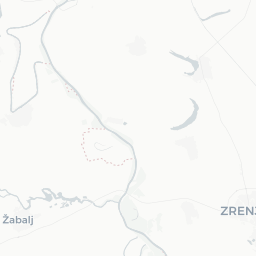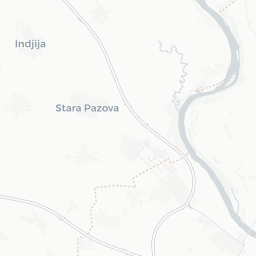Kosava from the Danube
1 comment
We here are crooked because of the wind, joking aside.
Generally Vojvodina, which is in the north of Serbia and occupies about 28% of Serbia, is a windy place.
But it also depends on which part of Vojvodina you are in. In Banat, especially in the south, the wind blows constantly, and there are several wind farms for the production of electricity there.
Some recent studies show that wind farms have a bad effect on the flora and fauna in the vicinity, but that part of Banat is sandstone.
In Srem, we have the island mountain Fruška Gora and a plain, so if you are there in a smaller valley it can be nice.
And in the very north, where I am, there is the Bačka plain with several alluvial plains, several hills. It is summer when it is needed most and there is no wind, we call it stagnant weather. And for a few days there is no wind at all when it is needed most.
Four winds blow in Vojvodina. The strongest wind is "Košava", which is caused by air currents from the southern parts of Russia towards the Mediterranean Sea, comes through the Danube valley and passes through the Djerdap gorge. It is a cold and strong wind that can cause great damage, dry up the soil and uncover and carry quicksand into the sand dunes of Banat. "North" is a cold wind that sweeps across the plain in winter, "South" is a warm wind, while "West" is the most common and brings rain or snow. Vojvodina has relatively small amounts of precipitation. Most of them are on Fruška Gora (more than 750 mm on average) and on the Vršac Mountains, then in western Bačka (650 to 750 mm). On average, 550 to 650 mm of water sediment is recorded annually. The least amount of rain is in northern Bačka and eastern Banat. The average annual air temperature is 11 degrees Celsius, 21.4 degrees Celsius in July, and -1.3 degrees Celsius in January.
As for climate change, we have more and more storms with strong winds
Tornadoes have not yet been recorded, at least not of that strength, they are mostly leeches that create a bit of a mess with dust, but they are also becoming stronger and more intense.
Part of the article taken from
At times, hurricane-force winds have caused enormous damage to buildings and nature throughout Vojvodina. Meteorologists' forecasts have come true these days, while prevention has failed, says Jovan Čabrilo, editor of the Vojvodina Meteo portal, for Autonomija
He explains that the strongest gusts of northwest wind on Saturday were recorded in Bačka, where there is the most damage, both to trees and to infrastructure because the wind blew the strongest there, or even sporadically reached hurricane-force gusts (about 100km/h, or 10 Beaufort).
"We can see falling roof tiles, tin roof structures, billboards that have been knocked down, and even bus stations. The majority of such scenes are precisely in Bačka, but there are many of them in the rest of Vojvodina as well. We also saw several examples of crushed cars, because huge branches fell over them", says Čabrilo.
According to him, a strong stormy wind (80km/h, ie 9 Beaufort) was also blowing in the rest of Vojvodina, which also causes damage, but on a smaller scale.
"Even though we are a windy area, we don't often have these kinds of winds whose speeds exceed 80 km/h and the number of days a year with such winds is very small. Therefore, the announcements and warnings that are issued should be taken very seriously," notes our interlocutor.

- Житиште, photo: Dragana Miljatović/Vojvodina Meteo

- The symbol of Savino Selo, the White Poplar (Populus Alba) – a monument of nature. It was demolished by the effect of stormy to hurricane-force winds on Saturday. Since 1986, it has been protected as a natural monument and represented a specimen of plant life of exceptional importance for the preservation of biodiversity. She was over 150 years old. It hid many secrets and love stories of this region, provided pleasant shade.
Photo: photo Savino selo/Vojvodina Meteo.
Unfortunately, we are witnessing increasingly destructive storms. Which are most active in the summer, bringing supercell storms, or in the winter period, but I would say in the winter with less intensity.
Considering my garden, I would say it is in a large neighborhood with houses next to the roads and the gardens are in the back of the yard and lean against each other.
It provides some minor protection but it doesn't help with bigger storms. This summer I witnessed and wrote about it when a storm destroyed the shade on my peppers and bent the shade net supports.

- Link is here
Of course, not everything is so bleak with the wind. It is important to learn how to turn the rows when sowing plants. And the gentle wind that constantly blows here dries out the moisture and prevents the appearance of flame blight.
I learned this by personal example, but now I know how to turn the rows better.
Here is a situation after a windy morning, the sun came out and the wind shook the little buds off the cypress trees.

And there are also beautiful things when the wind blows snow clouds over us and happiness never ends.The picture is from last year. My son and I were in a hurry to use the snow and make a snowman. Since snow doesn't last long

They say if there was no wind, spiders would spin the world.
We all need wind, but the problems with increasingly frequent supercell storms are a problem that worries us.
Thanks for reading.
Until next time.
Stay healthy.
Markone85







Comments